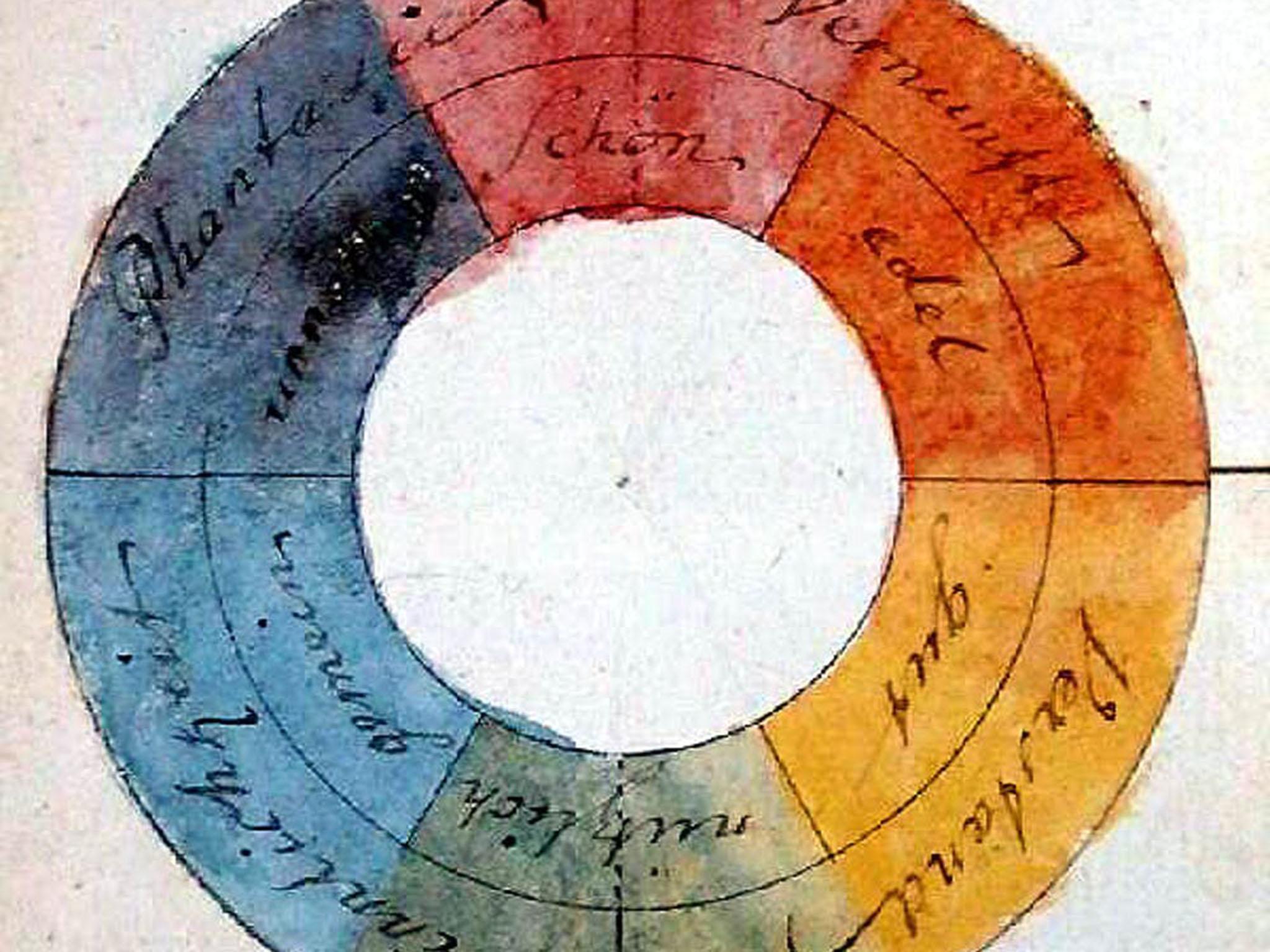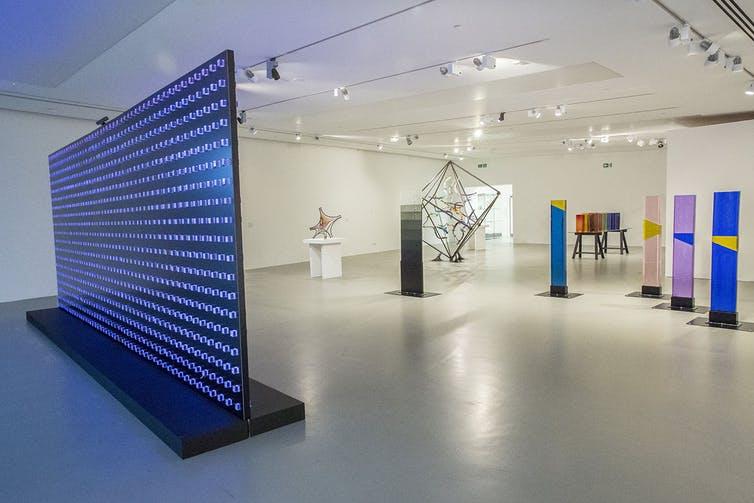Medieval concepts of colour turned into glass artwork in new exhibition
An unlikely combination of artists, medieval historians, philosophers and scientists have converged to create an exhibition of glass artworks

Your support helps us to tell the story
From reproductive rights to climate change to Big Tech, The Independent is on the ground when the story is developing. Whether it's investigating the financials of Elon Musk's pro-Trump PAC or producing our latest documentary, 'The A Word', which shines a light on the American women fighting for reproductive rights, we know how important it is to parse out the facts from the messaging.
At such a critical moment in US history, we need reporters on the ground. Your donation allows us to keep sending journalists to speak to both sides of the story.
The Independent is trusted by Americans across the entire political spectrum. And unlike many other quality news outlets, we choose not to lock Americans out of our reporting and analysis with paywalls. We believe quality journalism should be available to everyone, paid for by those who can afford it.
Your support makes all the difference.What is colour? This is one of those big questions that unlock “treasure chests” containing centuries of riches. Reach in and there are jewels to be discovered – of classical learning, philosophy, science ancient and modern, art and aesthetics. This might explain why we – an unlikely combination of artists, medieval historians, philosophers and scientists – have converged around a spectacular exhibition, Illuminating Colour, at the National Glass Centre in Sunderland.
The search for an understanding of colour has a long history. Aristotle imagined an abstract mathematical line in which the colours form a bridge between whiteness and blackness. Arab-speaking and European medieval thinkers adopted the ancient philosopher’s view until the brilliant polymath Robert Grosseteste rethought things. The medieval Englishman conceived colour as inhabiting a more complex space than a simple line, for the simple reason that more than one thing has to change to produce all the colours we see (think of primary and secondary colours).
Grosseteste’s “laboratory” seems to have been the rainbow. Rainbows produce different colours not just at different points, but in different clouds and under varying hues of sunlight. In an astonishingly perceptive treatise, On Colour, written in about 1225, he conjectured that colour occupied what we would now call a three-dimensional space. He saw that both light, and the material it passes through, combine to form colour.
Modern ideas of colour
The story continues into the early modern period and beyond. Histories have sometimes pitted Newton’s ideas from his experiments with prisms – that colour is intrinsic to light itself – against Goethe’s, who thought that colour was a created response of the human mind. But it would be more appropriate to see each of these extraordinary intellects contributing one of the two essential aspects of colour – it is light-filtered and perceived by eyes and brains.
In another astonishing insight, the 18th century physicist Thomas Young suggested that the reason for the three “ingredients” of colour (red, green and blue primaries, from which other colours can be made) was that the human eye possessed exactly three different types of wavelength-dependent cells. The extended work of identifying the cone cells of the human retina and their pigments took another century.
Even today we have only partial answers. Although we can measure the spread of wavelengths (the spectra) from any light sources, their human perception as colours has at least as much to do with the neural wiring of the different light-sensitive cone cells in our eyes to our visual cortex, and to the complex learned behaviour of interpretation and context. We don’t, for example, understand why green seems “closer” in some sense to blue than to red.
Turning medieval ideas into art
As this demonstrates, the search for the causes and meanings of colour is an inherently interdisciplinary question. This is what inspired an unusual collaboration between Durham and Oxford Universities and artists Cate Watkinson and Colin Rennie from the University of Sunderland, based at the National Glass Centre. We wanted to explore whether creating an exhibition on the topic might raise new questions.
Surprisingly, the art that developed from the science did not develop around recent research, as we expected it to, but from a collaborative examination of those 13th century writings of Robert Grosseteste. We found reading his ideas from both humanities and science perspectives to be uniquely powerful. There is something about the enigmatic unfamiliarity of the medieval thought world, in which colour’s axes of difference are not red, green and blue, but “greatness”, “clarity” and “purity”, that knocks everyone’s thinking into different, more creative tracks.

In one work he gave a physical analogy – that of glass: “When the sun’s light is added to an existing colour in the medium through which it passes, for example to the colour of the glass, it will necessarily incorporate itself to that colour, and draws the colour with itself, and the colour becomes the nature of the light, and the light in the nature of the colour; it will be a ray of yellow or green or red, according to the colour that it passed through.”
And so glass proved to be a perfect, and yet beguiling medium for the communication of his complex ideas. It is itself imbued with powerful metaphoric qualities. It can be opaque or crystal clear; it can allow the observer to see through, but is equally capable of distorting vision. And, as Grosseteste pointed out, it seems to absorb, transform and transmit exterior light, creating an internal space, both complex and simple, colourful and direct. Working with those who know the properties of glass has been a transformative experience for how to reconstruct past ideas and explain modern ones.
Glass artworks
Standing in the centre of the exhibition space is an immense open frame in the form of a cube. Its interior hosts coiling coloured ribbons of glass, shards of broken spirals, suspended. This interpretation – Colin Rennie’s – takes the analytical work of the project on Grosseteste’s theory of the rainbow, but transforms its abstract spirals of mathematical colour space into a stunning work of art.
Cate Watkinson’s reflection on the material takes a different route, one that extends also from both of Grosseteste’s works. Large pillars of glass, cut so that rainbow reflections fall within them, call attention to the same movement from light to colour.
Watching ideas from the Middle Ages take on physical shape is strange and startling. It is the interface of medieval, scientific and technical knowledge, together with creativity in all areas, that makes this collaboration, and the sculptures that embody it, possible. More widely, this artistic response to ancient thinking reminds us of the categories of culture and thought that still connect us to the fertile medieval centuries.
Illuminating Colour is at the National Glass Centre in Sunderland until 11 March
Giles Gasper is a reader in medieval history at Durham University; Cate Watkinson is a senior lecturer in architectural glass at the University of Sunderland, and Tom McLeish is a professor of natural philosophy in the department of physics at the University of York. This article was originally published on The Conversation (www.conversation.com)
Join our commenting forum
Join thought-provoking conversations, follow other Independent readers and see their replies
Comments